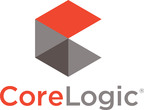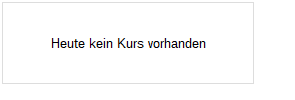
CoreLogic Reports 30,000 Completed Foreclosures in October 2016
PR Newswire
IRVINE, Calif., Dec. 13, 2016
IRVINE, Calif., Dec. 13, 2016 /PRNewswire/ -- CoreLogic® (NYSE: CLGX), a leading global property information, analytics and data-enabled solutions provider, today released its October 2016 National Foreclosure Report which shows the foreclosure inventory declined by 31.5 percent and completed foreclosures declined by 24.9 percent compared with October 2015. The number of completed foreclosures nationwide decreased year over year from 40,000 in October 2015 to 30,000 in October 2016, representing a decrease of 74.7 percent from the peak of 118,287 in September 2010.
Experience the interactive Multimedia News Release here: https://www.multivu.com/players/English/71280581-corelogic-october-2016-foreclosure-report
The foreclosure inventory represents the number of homes at some stage of the foreclosure process and completed foreclosures reflect the total number of homes lost to foreclosure. Since the financial crisis began in September 2008, there have been approximately 6.5 million completed foreclosures nationally, and since homeownership rates peaked in the second quarter of 2004, there have been approximately 8.5 million homes lost to foreclosure.
As of October 2016, the national foreclosure inventory included approximately 328,000, or 0.8 percent, of all homes with a mortgage, compared with 479,000 homes, or 1.2 percent, in October 2015.
CoreLogic also reports that the number of mortgages in serious delinquency (defined as 90 days or more past due including loans in foreclosure or REO) declined by 24.8 percent from October 2015 to October 2016, with 1 million mortgages, or 2.5 percent, in serious delinquency, the lowest level since August 2007. The decline was geographically broad with decreases in serious delinquency in 47 states and the District of Columbia.
"Loan performance varies by the health of the local economy and housing market. Alaska, North Dakota and Wyoming, three states with energy-related job loss, experienced a rise in serious delinquency rates while all other states had a decline," said Dr. Frank Nothaft, chief economist for CoreLogic. "Although there were large declines in foreclosure rates in New York and New Jersey, both states experienced the highest serious delinquency rates in the nation, reflecting lagging home values in most neighborhoods and an unemployment rate above the national average."
"Housing and labor markets improved over the past year, setting the stage for further declines in foreclosure rates across much of the nation," said Anand Nallathambi, president and CEO of CoreLogic. "Home values posted an annual gain of 5.8 percent through September in the CoreLogic Home Price Index, and payroll employment rose 2.4 million for the year through October."
Additional October 2016 highlights:
- On a month-over-month basis, completed foreclosures declined by 27.5 percent to 30,000 in October 2016 from the 41,000 reported for September 2016.* As a basis of comparison, before the decline in the housing market in 2007, completed foreclosures averaged 22,000 per month nationwide between 2000 and 2006.
- On a month-over-month basis, the October 2016 foreclosure inventory was down 3.6 percent compared with September 2016.
- The five states with the highest number of completed foreclosures in the 12 months ending in October 2016 were Florida (51,000), Michigan (29,000), Texas (26,000), Ohio (23,000) and Georgia (20,000).These five states accounted for 36 percent of completed foreclosures nationally.
- Four states and the District of Columbia had the lowest number of completed foreclosures in the 12 months ending in October 2016: the District of Columbia (212), North Dakota (278), West Virginia (407), Alaska (622), and Montana (660).
- Four states and the District of Columbia had the highest foreclosure inventory rate in October 2016: New Jersey (2.8 percent), New York (2.7 percent), Maine (1.7 percent), Hawaii (1.7 percent) and the District of Columbia (1.6 percent).
- The five states with the lowest foreclosure inventory rate in October 2016 were Colorado (0.3 percent), Minnesota (0.3 percent), Arizona (0.3 percent), Utah (0.3 percent) and Michigan (0.3 percent).
*September 2016 data was revised. Revisions are standard, and to ensure accuracy CoreLogic incorporates newly released data to provide updated results.
Judicial Foreclosure States (Ranked by Completed Foreclosures)
Non-Judicial Foreclosure States (Ranked by Completed Foreclosures)
Foreclosure Data for Select Core Based Statistical Areas (CBSAs) Ranked by Completed Foreclosures
Figure 1: Number of Mortgaged Homes per Completed Foreclosure
Figure 2: Foreclosure Inventory as of October 2016
Figure 3: Foreclosure Inventory Rate by State Map
For ongoing housing trends and data, visit the CoreLogic Insights Blog: www.corelogic.com/blog.
Methodology
The data in this report represents foreclosure activity reported through October 2016.
This report separates state data into judicial versus non-judicial foreclosure state categories. In judicial foreclosure states, lenders must provide evidence to the courts of delinquency in order to move a borrower into foreclosure. In non-judicial foreclosure states, lenders can issue notices of default directly to the borrower without court intervention. This is an important distinction since judicial states, as a rule, have longer foreclosure timelines, thus affecting foreclosure statistics.
A completed foreclosure occurs when a property is auctioned and results in the purchase of the home at auction by either a third party, such as an investor, or by the lender. If the home is purchased by the lender, it is moved into the lender's real estate-owned (REO) inventory. In "foreclosure by advertisement" states, a redemption period begins after the auction and runs for a statutory period, e.g., six months. During that period, the borrower may regain the foreclosed home by paying all amounts due as calculated under the statute. For purposes of this Foreclosure Report, because so few homes are actually redeemed following an auction, it is assumed that the foreclosure process ends in "foreclosure by advertisement" states at the completion of the auction.
The foreclosure inventory represents the number and share of mortgaged homes that have been placed into the process of foreclosure by the mortgage servicer. Mortgage servicers start the foreclosure process when the mortgage reaches a specific level of serious delinquency as dictated by the investor for the mortgage loan. Once a foreclosure is "started," and absent the borrower paying all amounts necessary to halt the foreclosure, the home remains in foreclosure until the completed foreclosure results in the sale to a third party at auction or the home enters the lender's REO inventory. The data in this report accounts for only first liens against a property and does not include secondary liens. The foreclosure inventory is measured only against homes that have an outstanding mortgage. Generally, homes with no mortgage liens are not subject to foreclosure and are, therefore, excluded from the analysis. Approximately one-third of homes nationally are owned outright and do not have a mortgage. CoreLogic has approximately 85 percent coverage of U.S. foreclosure data.
Source: CoreLogic
The data provided is for use only by the primary recipient or the primary recipient's publication or broadcast. This data may not be re-sold, republished or licensed to any other source, including publications and sources owned by the primary recipient's parent company without prior written permission from CoreLogic. Any CoreLogic data used for publication or broadcast, in whole or in part, must be sourced as coming from CoreLogic, a data and analytics company. For use with broadcast or web content, the citation must directly accompany first reference of the data. If the data is illustrated with maps, charts, graphs or other visual elements, the CoreLogic logo must be included on screen or website. For questions, analysis or interpretation of the data, contact Lori Guyton at lguyton@cvic.com or Bill Campbell at bill@campbelllewis.com. Data provided may not be modified without the prior written permission of CoreLogic. Do not use the data in any unlawful manner. This data is compiled from public records, contributory databases and proprietary analytics, and its accuracy is dependent upon these sources.
About CoreLogic
CoreLogic (NYSE: CLGX) is a leading global property information, analytics and data-enabled solutions provider. The company's combined data from public, contributory and proprietary sources includes over 4.5 billion records spanning more than 50 years, providing detailed coverage of property, mortgages and other encumbrances, consumer credit, tenancy, location, hazard risk and related performance information. The markets CoreLogic serves include real estate and mortgage finance, insurance, capital markets, and the public sector. CoreLogic delivers value to clients through unique data, analytics, workflow technology, advisory and managed services. Clients rely on CoreLogic to help identify and manage growth opportunities, improve performance and mitigate risk. Headquartered in Irvine, Calif., CoreLogic operates in North America, Western Europe and Asia Pacific. For more information, please visit www.corelogic.com.
CORELOGIC and the CoreLogic logo are trademarks of CoreLogic, Inc. and/or its subsidiaries.

To view the original version on PR Newswire, visit:http://www.prnewswire.com/news-releases/corelogic-reports-30000-completed-foreclosures-in-october-2016-300377071.html
SOURCE CoreLogic

Mehr Nachrichten zur CoreLogic, Inc Aktie kostenlos abonnieren
(Mit der Bestellung akzeptierst du die Datenschutzhinweise)

Hinweis: ARIVA.DE veröffentlicht in dieser Rubrik Analysen, Kolumnen und Nachrichten aus verschiedenen Quellen. Die ARIVA.DE AG ist nicht verantwortlich für Inhalte, die erkennbar von Dritten in den „News“-Bereich dieser Webseite eingestellt worden sind, und macht sich diese nicht zu Eigen. Diese Inhalte sind insbesondere durch eine entsprechende „von“-Kennzeichnung unterhalb der Artikelüberschrift und/oder durch den Link „Um den vollständigen Artikel zu lesen, klicken Sie bitte hier.“ erkennbar; verantwortlich für diese Inhalte ist allein der genannte Dritte.




